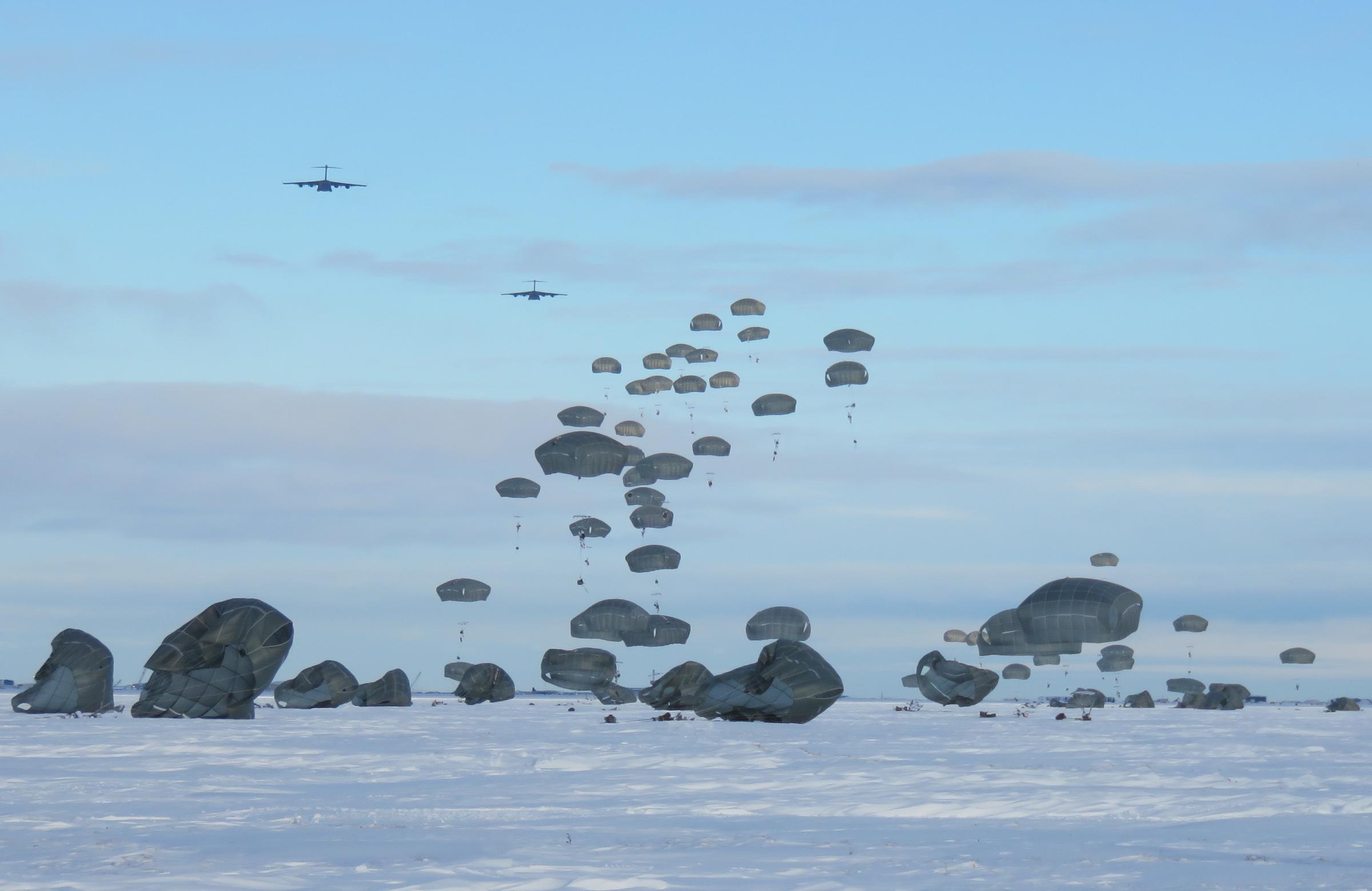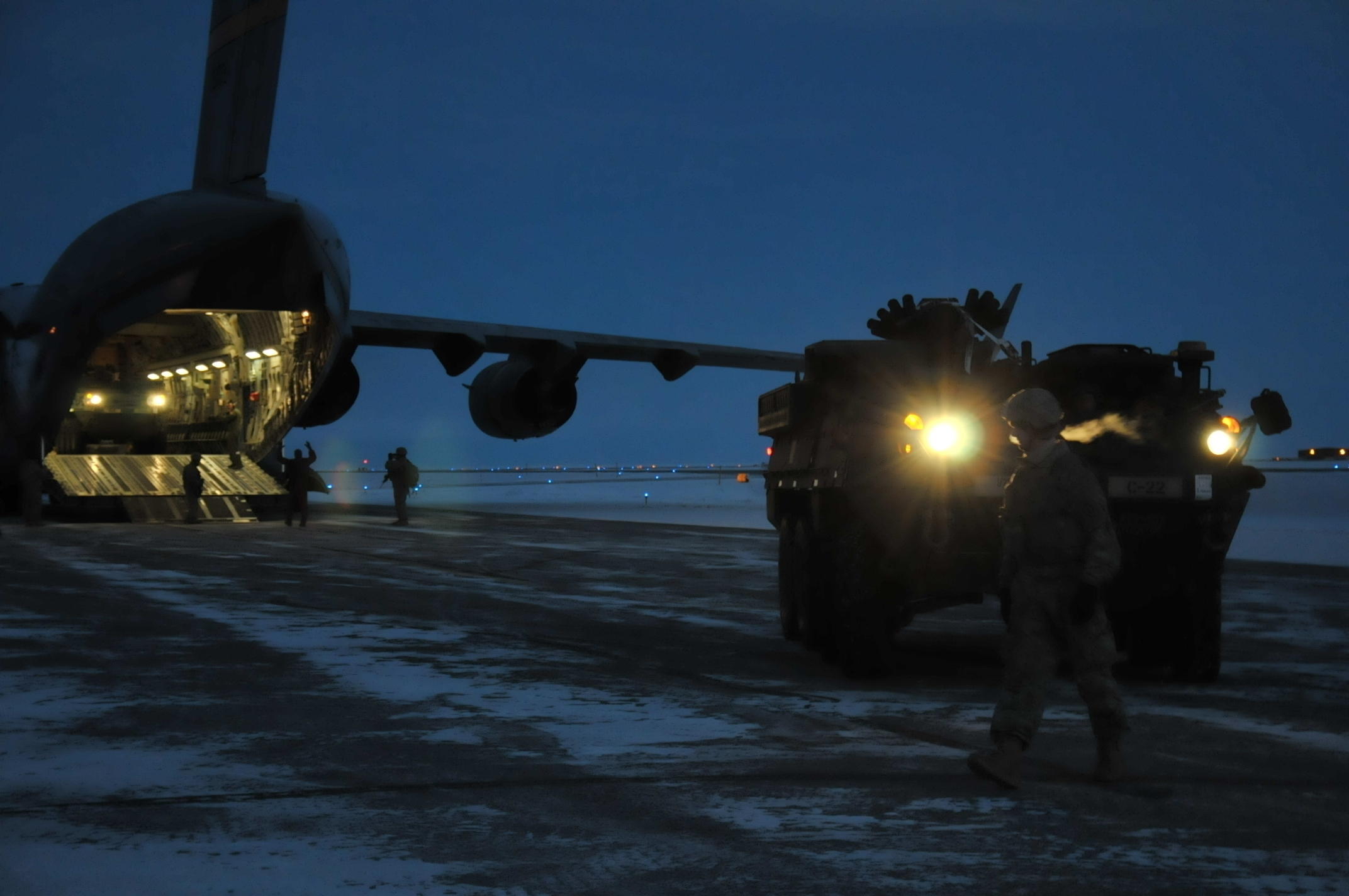
About 200 paratroopers from Joint Base Elemendorf-Richardson (JBER) will drop into Deadhorse Tuesday as part of a joint Army-Air Force rapid-deployment exercise that’ll include Stryker Brigade soldiers and equipment from Fort Wainwright.
The exercise is called Spartan Pegasus, and it’s intended to demonstrate the ability of paratroopers and Strykers to deploy quickly to and operate in the Arctic.
“It’s all about demonstrating this capability to move and not just survive executing an airborne operation in the Arctic or high-altitude environment, but really, thrive in the extreme cold,” Lt. Col. Ethan Diven said. He commands the Army’s 1st Squadron, 40th Cavalry Regiment (Airborne). That’s the JBER-based unit will be sending the paratroopers to the exercise to be held near Deadhorse.
Diven said the exercise is the third in a series conducted over the past 14 months. And he says this one calls for a more rapid deployment, using Air Force transports and Chinook helicopters out of Wainwright.

“The paratroopers and heavy equipment will move in aircraft, both C-130 and C-17, from JBER, and then the Strykers that are up at Wainwright will move via some C-17s and make their way out to Deadhorse,” Diven said. “And then the CH-47s, the Chinooks, will fly from Fort Wainwright.”
The units will all converge at the site some 500 miles north of Fairbanks, where they’ll carry out what Diven describes as an unusual mission: recovering a downed satellite.
“We are going to conduct that airborne insertion,” Diven said. “We’re the closest unit, and it’s the fastest way to get us there to secure it and then recover it.”
Diven said that part of the exercise is a bit out-of-the ordinary, because it calls for the military to respond to a request from a civilian federal agency. A U.S. Army-Alaska spokesman said the scenario doesn’t identify what kind of satellite would be recovered. Nor is it clear under the scenario which civilian agency requests assistance.
Diven said the Army uses Deadhorse for the training because it’s north of the Arctic Circle and is consistently cold enough to test soldiers and equipment. Tuesday’s forecast calls for a high of 13 below zero, dropping to 25 below overnight.
The exercise is scheduled to wrap up later this week.
Tim Ellis is a reporter at KUAC in Fairbanks.




